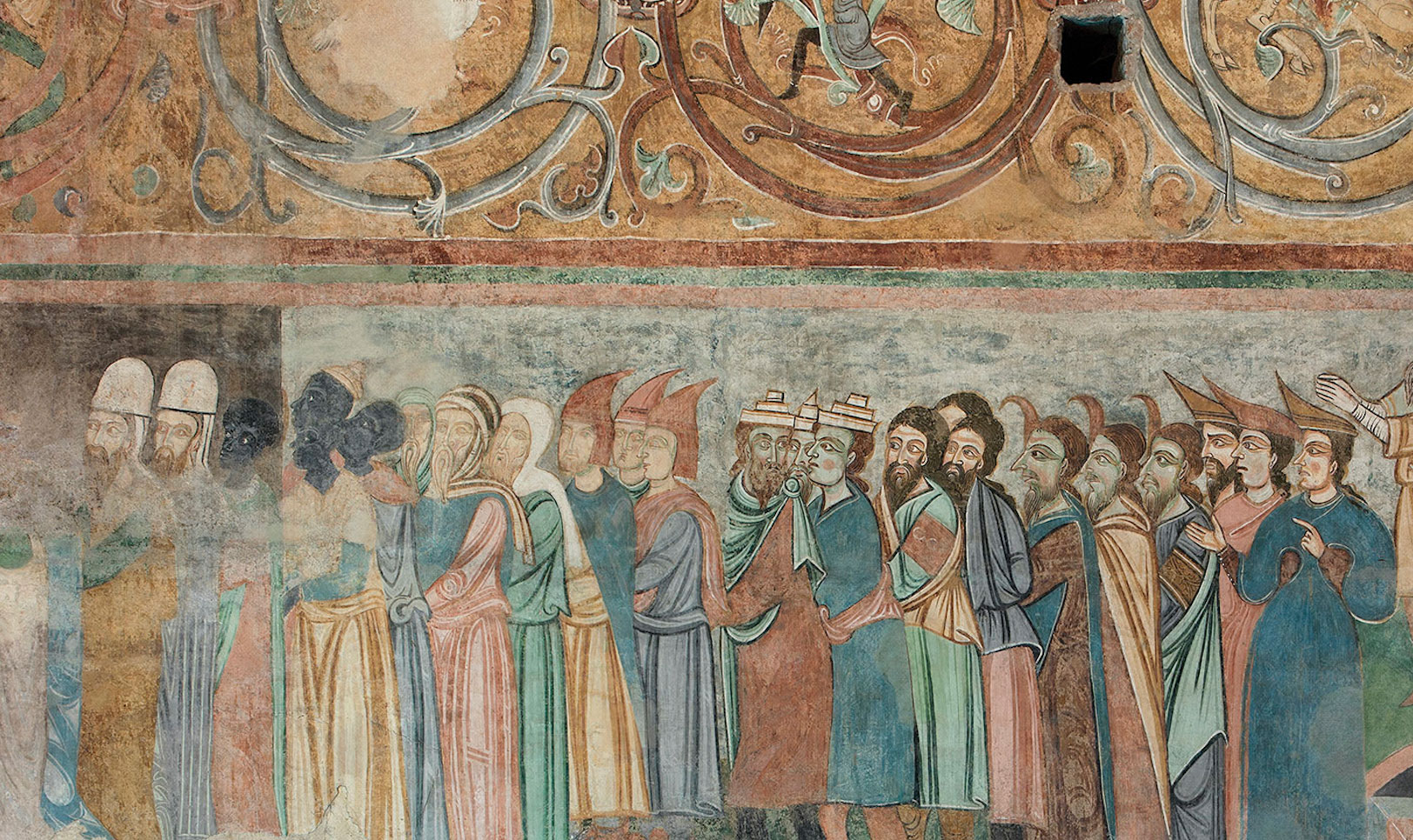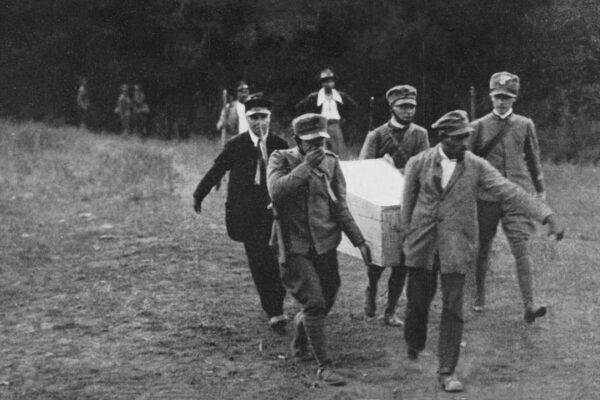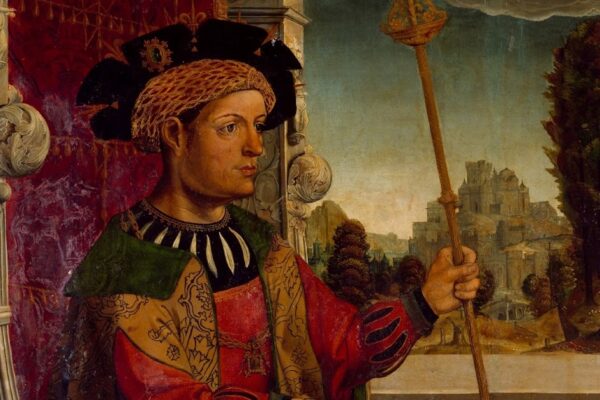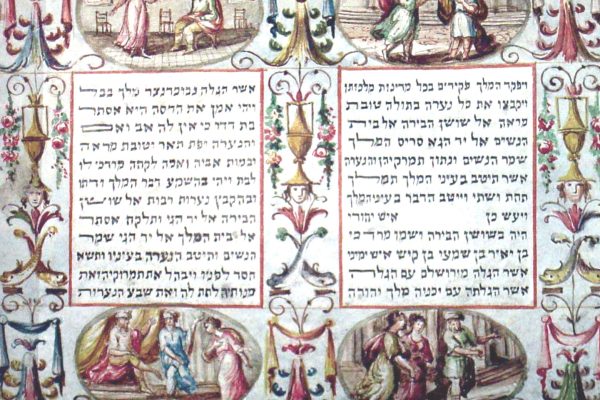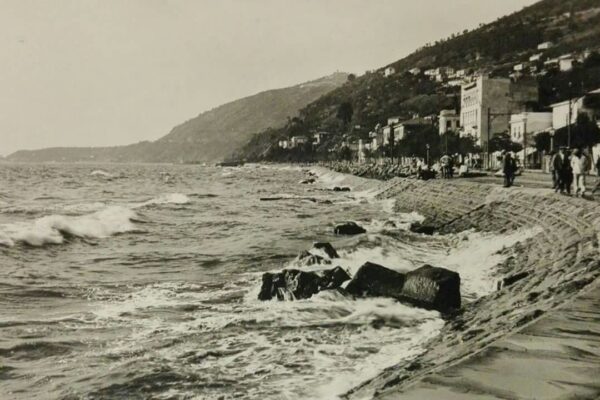“But when I raise my voice at Kedushah or Yozer, the fountains of song open wide. And on Kippur, or Purim, or any of the holidays, whether I chant a psalm, read a Haftarah, or even sing Lamentations on Tish‘ah b’Ab, why, all are struck dumb. I make them shed tears. I make them rejoice. Oh, no! Were Mr. A. to offer me all his wealth, he should not have my voice.” Machbarot, XV (trans. by Rav Sabato Morais)
A poet, satirist, and biblical commentator, Immanuel ben Shelomoh or Manoello Giudeo, was a contemporary of Dante. At ease with Hebrew, vernacular, and familiar with Arabic and Latin, he partook in all cultural conversations of his time and the transitions of knowledge and textual forms from Arabic to Latin and the Romance languages. His work and life have fascinated scholars for over six centuries making him one of the most studied Hebrew poets in history; yet, in the world of mass culture, he has remained practically unknown, if not for the fact that his name is emblazoned in the prayer book of the Jews of Rome.
Immanuel composed sonnets and maqāmat adapting both forms to Hebrew; depicted heaven and hell and, following Neoplatonic inspirations from al-Andalous and the Middle East, and celebrated love as an instrument of knowledge. He wrote commentaries on nearly every book of the Bible, honored the teaching of Maimonides, while engaging on his own terms in the debates on faith, ethics, science, and philosophy.
Among many reasons for his fame and oblivion, one may be that his most published and studied book, the Machbarot, a collection of parodic tales written in Hebrew foreshadowing Boccaccio’s Decameron, has never been translated as a whole. Scholars have parsed fragments of text, offering their own translation and interpretation with widely diverging renderings of both. Yet, experts of Medieval Hebrew who worked on the Machbarot in the original language, have been puzzled by the complexity of the text and the challenge to imagine the world in which Immanuel lived.
Little is known of the Jewish community of Rome of his time. He was born between 1261 and 1270, shortly after the death of the Emperor Fredrick II and the eclipse of his empire centered in the Mediterranean. He died sometimes after 1335 during the papal sojourn in Avignon. During his lifetime Rome was full of ferments and turmoil following the commune experience and a period in which the Popes, for the most part, did not permanently reside in the city.
If communal records have been lost, a considerable body of the Roman production of Hebrew manuscripts has arrived to us whole. What transpires from these texts is that in the time period in which Immanuel lived, Rome was an important center of Jewish learning and attracted sages from Spain, Provence, Apulia and the South of the peninsula. More than twenty scholars and scribes were active during his lifetime and produced a large amount of literature and commentaries.
Writers like Benjamin Anau, Judah Siciliano and Ahitub ben Isaac of Palermo wrote liturgical and philosophical poetry. A celebrated scribe named Paola, a relative of the talmudist Natan ben Yehi’el, signed and dated her manuscripts stating that she inscribed them “on rivers of the Tiber.” Many philosophical, literary, and scientific works were translated into Hebrew from Latin, Vernaculars, and Arabic. They range from transliterated fragments of Dante’s Comedy to the Liber De Causis, an influential text of Arabic neoplatonism that misleadingly circulated as one of Aristotle’s works. Both translation have been attributed to Immanuel’s brother or cousin, Judah Romano. Judah is also said to have included in his works fragments of the Ikhwān Al-Ṣafā (or Epistles of the Brethren of Sincerity, a 10th century Muslim society of Neoplatonic inspiration created in Basra, Iraq). Some Jewish scholars seem to have also translated from Arabic and Hebrew into Latin. In addition, intellectuals from Provence gravitated to Rome, most notably Kalonymus ben Kalonymus who wrote in Arabic and Hebrew and, like Immanuel, was known for his satirical bent.
As common among Medieval poets, most biographical information about Immanuel comes from his own writings. He was a scion of the Ẓifroni family, the son of Solomon, a rabbi. His mother was Giusta, his brother Daniel. His wife too came from a rabbinical family. One of their sons, Moses died young. His teachers Zeraḥyah ben Yiṣḥaq ben Shealti’el Ḥen and Benyamin ben Jeḥiel. He left Rome for unspecified reasons and traveled throughout the Papal state ending up in Verona at the court of Cangrande della Scala, the famous patron of Dante whose home was a stronghold of imperial and ghibelline power.
While the hypothesis of an expulsion of the Jews from Rome advanced by Leopold Zunz and others does not seem to be confirmed by other sources, an analysis of his times reveals many possible reasons for Immanuel’s meanderings.
The tensions between the popes and the emperors caused ongoing unrest; the Roman society was especially resistant to adopt the vernaculars in official settings, posing an obstacle to its literary practice; the decline in the peninsula of the Southern and Arab heritage, that had significantly influenced the the literary languages as well as the Roman yeshivot, may have caused further uncertainty. Intellectuals emerged as key players in the power battles and needed to find their place amidst complex dynamics. Being a member of a linguistic and religious minority, may have entailed additional challenges difficult to evaluate today.
Whatever his personal situation—he indicates that a financial scam forced him out of the city—Immanuel was one of many poets of his days who moved from one city to another and, while Rome attracted many learned Jews from all over the Mediterranean, he moved away from it.
Much richer is the information Immanuel provides on his readings, the topics of his studies, his models and inspirations, his worldview, ethics and his concept of truth. In presenting the Maḥbarot, he places himself at a cultural crossroad between the sonnet form initiated by the Sicilian poet Giacomo da Lentini and embraced by the romance literary world, and the Arabic maqāma, a performative style (sometimes translated as “standing gathering”) that had been perfected by Muḥammad al-Qāsim ibn ʿAlī al-Ḥarīrī. Hariri’s maqāma was translated into Hebrew by Immanuel’s model and inspiration, Judah al-Harizi, who also wrote original and very popular Hebrew maqāmat.
If these intricacies were not enough of a challenge, reading Immanuel’s work also demands a conspicuous repertoire of references not only to his choice of genres but to the Bible and other Hebrew textual traditions, to poets and sages, to Jewish, Christian and Muslim intellectual controversies and to the events of the day. The reader needs to be able to hear sound, which Immanuel tells us is the ultimate connection to the Lord, hear the beat, rhythm, meter and free flow; hear shifts of meaning triggered by homophonic letters, idiosyncratic Roman pronunciations, or Hebrew’s assonance with other languages. Unlike modern satire confined to opposition narratives, pre-modern wit relies on the complex semantic system that permeates the Arabic and Oriental tradition of the “eloquent rogue,” Hebrew parody, the favolelli (which circulated broadly at his time through the Novellino) and romance goliardic poetry alike with their counterpoints of allegory, deceit, and refraction of meaning.
Modern readers might be disoriented at how, through the exercise of wit, the narrator of the Machbarot is de-based and de-centered leaving the stage to his muse, the poetic language. Talent and success rely not in self-representation but in the poet’s partaking in a collective creative act: multiplying one self through literary artifice, citing and repurposing verses, perfecting someone else’s poetic achievements, or kindling an interlocutor’s imagination.
If decades of new scholarship on 13th-14th century Rome and the Hebraic culture in its midst, offer precious guidance to Immanuel’s reader, Hariri’s masterpiece, Impostures, is an essential part of his poetic and philosophical lineage. The Roman poet’s explicit connection to Impostures, “studded with the gems of oratory, salted with the table-talk of cultivated men, and emblazoned with verses of the Koran, replete with figures and allegories, proverbs and maxims, literary subtleties and grammatical enigmas, and judgments on disputed points of speech,” may in fact open the door to a more complex view not only of Immanuel’s writings but of that of his contemporaries. Farah Abdessamad’s question of weather Impostures may be “a checkmate, a parody, a subversion, dilettante artistry or a pragmatic pedagogical device?” very well applies to the Machbarot, and helps define a more precise place for it in relation to Dante’s Comedy and Boccaccio’s Decameron. (Farah Abdessamad, Truth or Dare? Reinterpreting Al-Harīrī’s Arab Rogue, 2021).
Immanuel tells us that, at age sixty, he felt the end approaching and the need to free his work and memory from the constraints of time. A trivial incident at a Purim party spurs him to collect his poems and songs in twenty-eight tales or machbarot. The tales, he informs us, will protect his poems from those who, lacking skills and soul, would deprive them of their “intention.” Each tale is farcical and enigmatic, where meaning fleets and shifts in multiple directions. Poetry is the fil rouge and quasi-protagonist of the book that pays homage to a long tradition of unmetered verses (or poetic prose) while inaugurating the first Hebrew sonnets ever written.
The poet’s choice of a performative form and his celebration of poetic practice is reflected both in the Machbarot and in his biblical commentaries, in particular the one on Shir HaShirim. His keen concern with the musical aspects of poetry poses the question of his soundscape. What did Immanuel hear? The sound of the synagogue was likely the closest to him. He was a chacham, a praised biblical commentator and a liturgical poet. One instance of unmetered and sometimes rhymed verse was the reading of the Torah which, in Rome featured distinct tropes perhaps inflected with Byzantine and Iberian cantillation modes. In his ear floated a vast repertoire of piyyutim, the Kallirian verse with its magical puzzles and the song of King Solomon in which he saw a perfect unity of all the elements of music. The persistent attribution to Immanuel of the Roman Yigdal, even if unfounded, suggests that poetry was central to his communal activity. So does the presence of verses from the Machbarot in two 15th century Roman collections of selichot, arguably the most intensely poetic experience in the Jewish liturgy.
Equally present in his work is the public performance of secular poetry, the salons or divans of his time in which poets competed in verses, as Immanuel explains, “sometimes metered and others accompanied by music.” We can speculate that Immanuel’s decision to tie his work to the Iberian-Arabic tradition also reflected a practice that existed in his aural surroundings of which no record has remained.
The spiritual and artistic dimension of Immanuel’s concerns, should not overshadow the political and social role that distinguished poetry at the time. And handful of his vernacular poems that have come down to us demonstrate intimacy with the larger society in Rome and Verona, respectively emblems of the Papacy and the Empire. It is in Hebrew however, that Immanuel confronts his contemporaries, including Jewish notables who become the object of praise and invectives in the last tale of the Machbarot, Ha-Tofet ve-ha-Eden narrating his journey through hell and paradise.
Much has been speculated about this composition whose theme clearly evokes Dante’s famed Comedy, later called “divine.” The theme of the ultramundane journey was not original to either Dante or Immanuel. It circulated in the peninsula through at least two versions of the popular Arabic devotional pamphlet Kitāb al-miʿrāj or Liber scalae Machometi, one of which was translated in Jewish circles. Another Jewish poet active in Rome, Ahitub ben Isaac of Palermo, dedicated verses to his wondrous flight to Heaven and the contemplation to divine knowledge.
While Immanuel’s personal relationship with Dante, who lived in Rome for some time, is elusive and unproven, we can say that both poets stage comedies of human action and divine retribution that define ethical and epistemological values. All we know about their relations is through Immanuel’s exchanges of verses with two other contemporaries: Bosone da Gubbio and Cino da Pistoia.
In fact, if it’s true that the Maḥbarot have acquired a foundational status in the history of Hebrew literature, Immanuel was also very popular in the larger literary world. His poems in vernacular were widely published and included in many anthologies. The popularity of his verses suggests that he was active and well known in the cultural milieu that became the laboratory of a new language. Poetry was central to the process by which a small elite experimented and gave legitimacy to what would eventually be called “Italian” in a modern sense.
While opening new possibilities, this process also coincided with the exclusion from the Christianized West, of the languages, mentalities (and people), that had been major vehicles and interpreters of knowledge and art in the previous centuries.
The reading of the Machbarot was restricted by both Rabbinic and Catholic authorities. These rulings contributed to Immanuel’s oblivion as a poet. But what was exactly being censored? What did Immanuel say that could not be carried on past the extraordinary transformations that occurred in his lifetime? What did he represent that Jews and Christians agreed would be best to silence? What is it that the Prince incites him to protect in the folds of his tales?
Whether or not this questions may find answers, new readings of Immanuel’s work will generate a larger space to stage his riddles and wit, and perhaps gain a glimpse of a world that, he may have already understood as partly vanishing and partly being shaped anew.
This text is a working canvas for Centro Primo Levi’s ongoing project on Immanuel of Rome. Compiled by Natalia Indrimi. Immanuel’s Research Group is supported by Centro Primo Levi New York, NYU Casa Italiana Zerilli Marimò, the Jewish Museum of Rome, and the University of Rome La Sapienza.
Image: Tower if the San Zeno Abbey, 13th-14th century. This fresco has been generally interpreted as the Nations’ tribute to the Emperor. Some historians identify the emperor with Fredrick II, based on his relation with Verona and the privilege he granted to the abbey. Fabrizio Lelli (University of Rome La Sapienza) noted that the nations appearing in the fresco’s procession in Verona evoke those mentioned by Immanuel in his vernacular poem Bisbidis celebrating a fest at the court of Cangrande della Scala.


